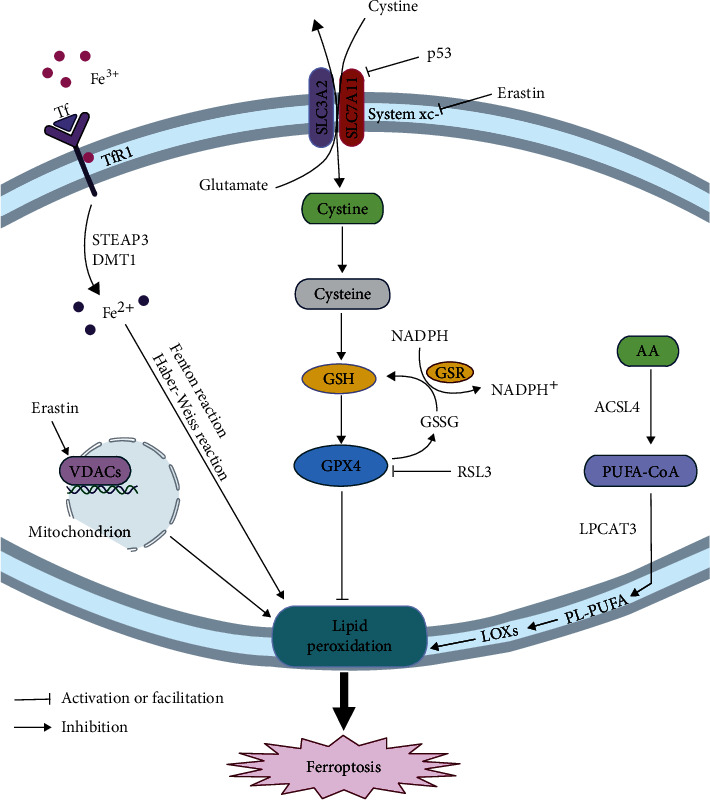Figure 1.

The mechanism of ferroptosis. Circulating iron enters cells by binding to TFR1 on the cell membrane, where the STEAP3 reduces ferric iron to ferrous iron. DMT1 releases the divalent iron into a labile iron pool in the cytoplasm, and iron overload can induce ferroptosis by producing ROS through the Fenton and Haber–Weiss reactions. The sodium-dependent system xc– transports extracellular cystine into the cell and further converts it to cysteine. The selective inhibitor of system xc− leads to a decrease in intracellular GSH, which aggravates ROS accumulation and eventually leads to ferroptosis; P53 can inhibit the uptake of cystine by system xc− via downregulating the expression of the SLC7A11 subunit, resulting in a decrease in cystine-dependent glutathione peroxidase activity and cell antioxidant capacity and an increase in lipid ROS, leading to ferroptosis of cells; RSL3 can induce ferroptosis by antagonizing GPX4; Hydroxyl radicals can directly interact with PUFAs in membrane phospholipids through chain reactions to form lipid peroxides, inducing ferroptosis.
